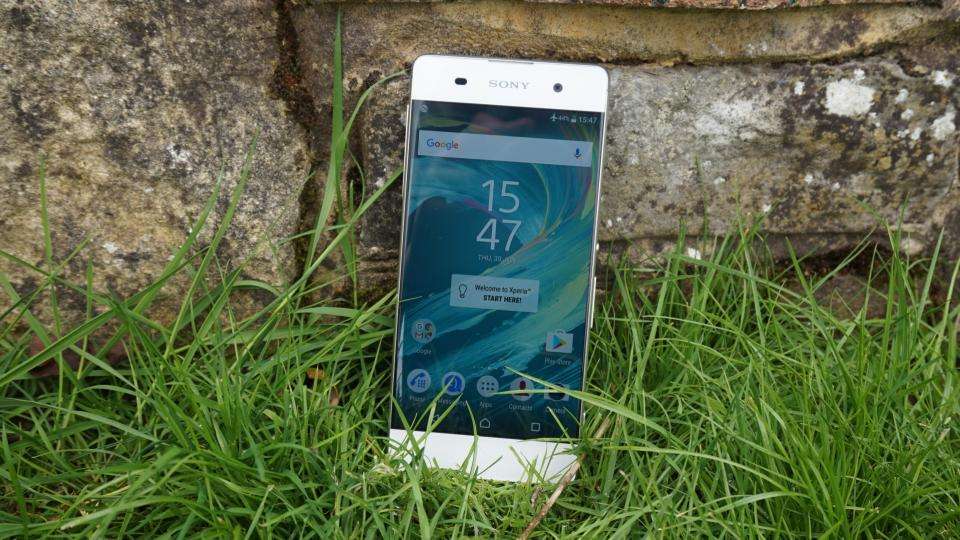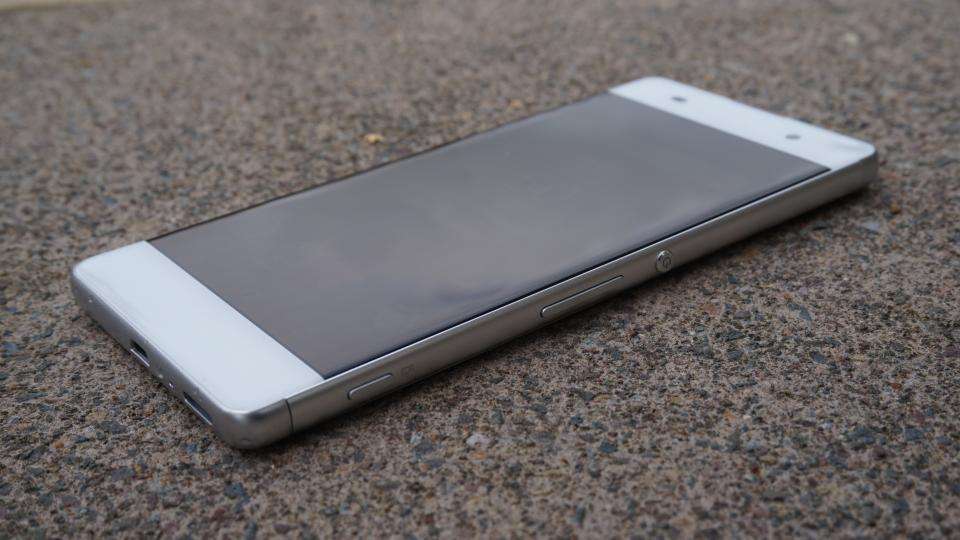Update : After much delay, the Xperia XA has finally got access to Android N – in the end, just a couple of months ahead of the release of Android O.

So should you buy the handset now? Probably not. Although deals have come down in price, and you can get the handsome handset for as little as £12.99 per month , it has since been superceded by the Xperia XA1 which improves on it in a number of ways. Not only is the processor bumped from a Mediatek Helio P10 to a Helio P20, but it gets an additional gigabyte of RAM, and a boost to 10MP boost to the camera.
But if you see a good deal on the Xperia XA, the review below should give you an idea on what you're getting for the money.
Katherine's original review continues below.
The Sony Xperia XA has a beautiful edge-to-edge display, which would lead you to think it was Sony's 2016 flagship phone. Instead, that honour goes to the underwhelming Xperia X , where the Xperia XA, was Sony's mid-range phone. With almost non-existent bezels, it's a mystery why Sony didn't employ this attractive design on the Xperia X.
The Xperia doesn't have a fingerprint sensor, but it looks more expensive than its £240 price tag - the XA can now be found for as low as £170 on Amazon . With its smooth, soft touch rear and gently rounded corners, the XA is on of Sony's most comfortable-to-hold smartphones to date.


Display
It's a shame, then, that the XA's 5in, 1,280x720 display is nowhere near as good as those used in rest of Sony's 2016 smartphones. Covering just 81.3% of the sRGB colour gamut, it simply doesn't have the same depth of colour as the Xperia X, and it even falls behind the Xperia M5 , Sony's other mid-range handset we reviewed earlier in the year, which covered 92.2%.
This is a real shame, as Sony's displays have consistently been one of its key strengths. Sadly, the XA also lags behind on brightness, topping out at 407.43cd/m2. This is by no means terrible, and still just about good enough to see the screen clearly outdoors in direct sunlight, but when the Xperia X, M5 and even 2014's M4 Aqua all broke 500cd/m2, the XA once again feels quite dull by comparison. Contrast was reasonably good and I measured a ratio of 1,119:1, so at least you get a decent gradient between lights and darks.
Battery Life
I suspect Sony had good reason for curtailing the screen's maximum brightness, as a brighter screen would have used more power and reduced battery life further. Its 2,300mAh battery might possibly be a bit on the small side compared to other mid-range smartphones, but even setting the screen brightness to our standard measurement of 170cd/m2 only yielded a rather pitiful battery life score of 7h 12m in our continuous video playback test.
This just isn't good enough in this day and age, especially when you've got budget phones that are half the price of the XA, such as the Vodafone Smart Prime 7 , the Moto G 3rd Gen , and Samsung Galaxy J5 , regularly exceeding at least ten hours under the same conditions.
Performance
The one thing the XA does have on its side, however, is speed. With an octa-core 2.0GHz MediaTek MT6755 processor and 2GB of RAM at its disposal, the XA feels silky smooth in day-to-day use, and Sony's version of Android 6.0.1 rarely lagged or tripped over itself. Bizarrely, our usual Geekbench 3 benchmarks kept crashing when I tried to run them on the XA.
This chipset puts the Xperia XA roughly on a par with the £170 Moto G4 . However, comparing it something closer to its £240 price, and I can confidently say it's outclassed by the absurdly quick OnePlus 2 , which costs £250.
All of this isn't really a major issue, though, as speed in Android isn't the Xperia XA's issue. In fact, it's the one area, alongside its design, that I'm perfectly happy with.
Our graphics tests had no benchmarking issues. This time, we're certain the Xperia XA's on the back foot, as its 445 frames in GFX Bench GL's offscreen Manhattan 3.0 test only equates to around 7.2fps, putting it a long way behind the OnePlus 2's 1,396 frames and 23fps average.
In practice, it's not nearly as bad as it sounds, for while complex games like Hearthstone were a tad jerky in places, it wasn't really bad enough to make me stop playing at any point. Simpler games like Threes also ran perfectly fine, so you shouldn't have too much trouble running most of your favourite games.











